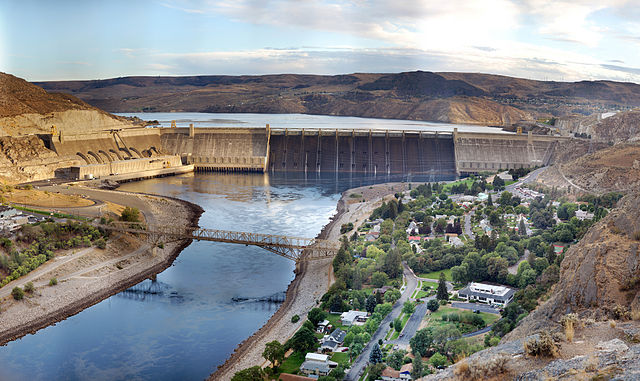2011: The Year Renewables Overtook Nuclear in the US

2011 was, it’s generally agreed, a crappy year. There were tornados in the US, flooding in Asia, an oil slick in the Gulf of Mexico, and financial turmoil in Europe. Even the Arab Spring, which we’ve all been so excited about, has yet to produce any definitively democratic governments.
But here’s a statistic to feel a bit warmer about: 2011 was the year renewable energy overtook nuclear energy in the US.
You might recall the milestone was first reported back in July, when the Energy Information Administration released figures for power generation in the first three months of the year. They showed that renewable sources were providing around 11.73% of the US’ energy production. Nuclear was only providing 11.1%.
But the first three months of 2011 were a bad time for nuclear, what with the first partial meltdown of a reactor in a quarter-century and all. The question was whether, once emergency safety reviews had been carried out worldwide and the nuclear industry got back to business as usual, nuclear would overtake renewables again.
Well, now we know: it didn’t. The EIA has just released updated figures that cover the first nine months of 2011. In these 9 months, nuclear accounted for just 10.62% of the US’ energy mix, down from 2010’s figure of 11.3%. Renewables, on the other hand, held strong at about 12%, up from 10.9% in 2010.
As Good’s Sarah Laskow reports, when you focus on electricity generation, in particular, renewables’ progress is even more impressive.
When you look at the electricity sector alone, renewables shine even brighter. Nuclear’s share of electricity generation dropped by 2.8 percent compared to the first nine months of 2010, while coal’s share dropped by 4.2 percent. In the same period, renewables’ share of electricity generation grew almost 25 percent.
One Nation under a Dam
This is all down to wind and solar, right? Well, not exactly. In fact, by far, the biggest renewable contributor to the US’ energy supply is hydropower, thanks to mega-dams like the Grand Coulee, pictured above. All in all, hydropower accounts for 4.35% of US energy supply. Next comes biomass at 3.15%, biofuels at 2.57%, and then wind, with just 1.45%. Solar? just 0.15%, half as much as geothermal energy.
The good news, though, is that solar and wind are both increasing rapidly, as CleanEdge points out. The amount of electricity produced by solar power was 46.5% higher in the first nine months of 2011 than the equivalent period in 2010; for wind the figure was 27.1%.
Can wind and solar continue this breakneck growth? Lascow is optimistic:
Renewable energy is thriving now, and its share of power generation should continue to grow over the coming decades. For the foreseeable future, that trend might require support from the government: If Congress decides to keep rolling back subsidies, the solar and wind industry worry that growth could stall out. But private financiers are starting to realize that solar installations are strong investments that deliver steady, predictable profits, and the solar industry is starting to envision a time when its momentum won’t depend on the whims of Washington.
Whether or not you support nuclear power, everyone should be pleased to see renewable energy growing in the US, bringing not just clean power but jobs with it. Hopefully we’ll see a trend of continued growth when the first figures for 2012 come out in July this year.
You can return to the main Market News page, or press the Back button on your browser.

